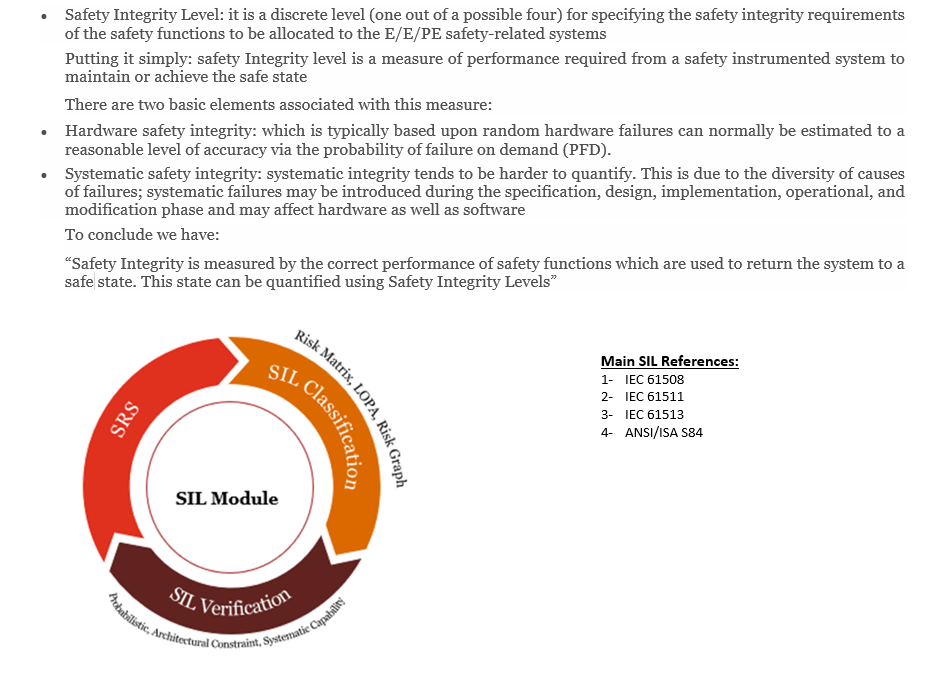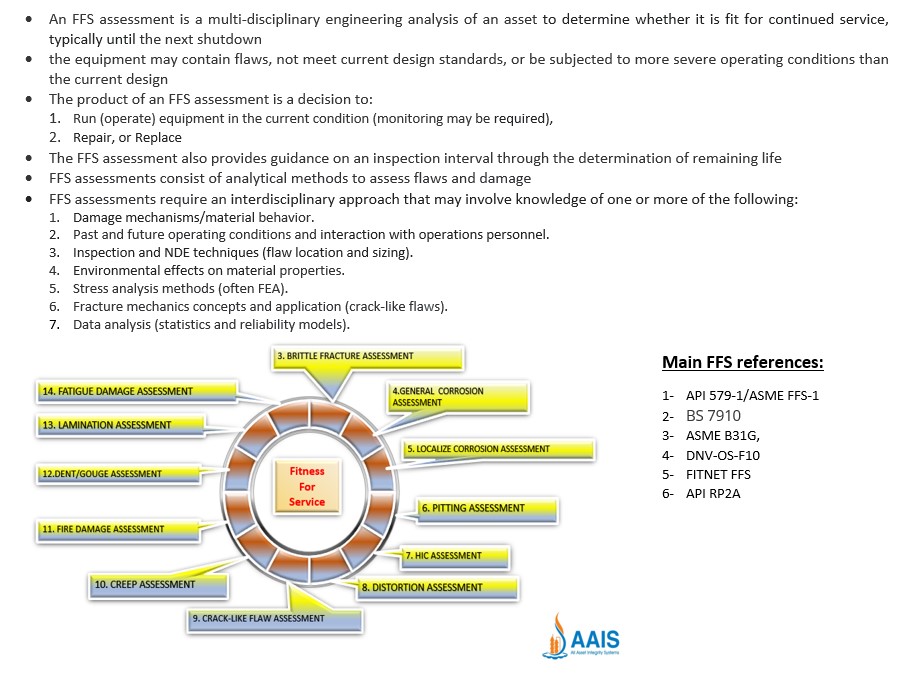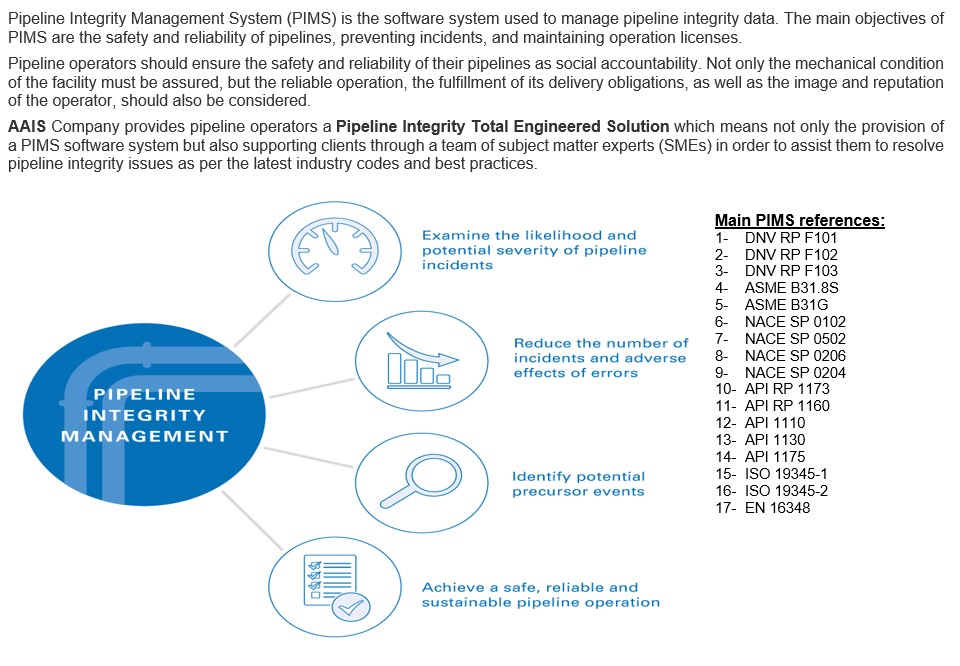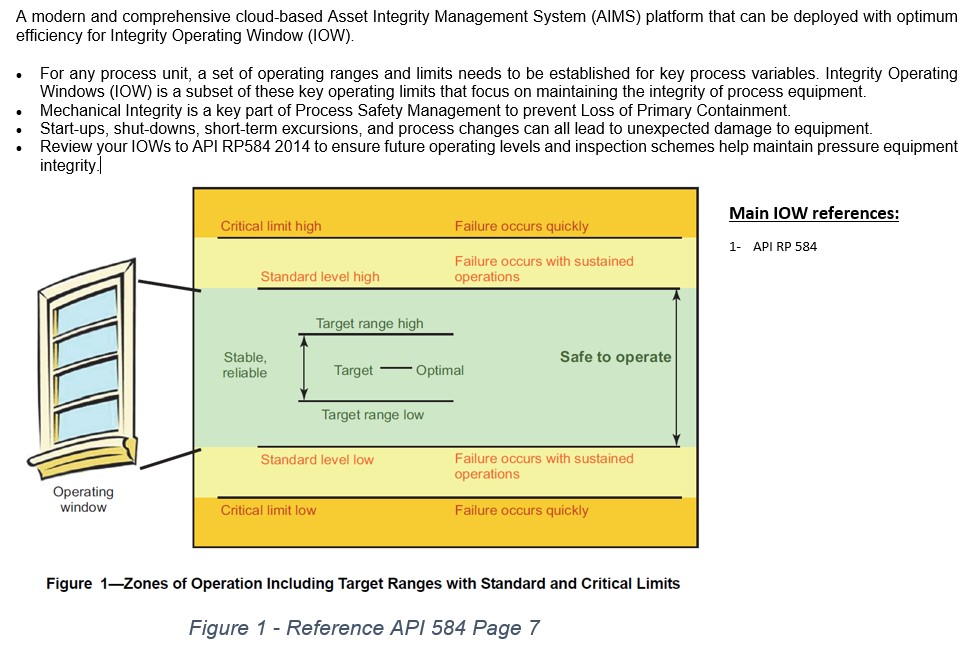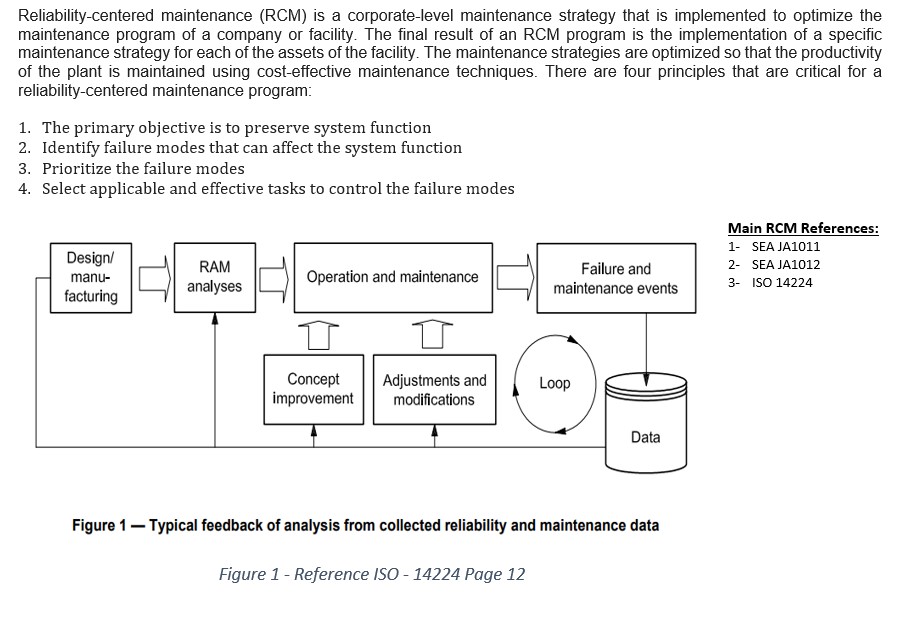Files
|
Type
|
Format
|
Title
|
Edition
|
Description
|
Author
|
Availability
|
Size
|
|---|---|---|---|---|---|---|---|
| S | application/pdf |
API 510 -Pressure Vessel Inspection Code- In-service Inspection, Rating, Repair, and Alteration |
2018 |
This inspection code covers the in-service inspection, repair, alteration, and rerating activities for pressure vessels and the pressure-relieving devices protecting these vessels. This inspection code applies to all hydrocarbon and chemical process vessels that have been placed in service |
API |
Upon Request |
368 KB |
| S | application/pdf |
API 579-1- ASME FFS-1 Fitness -for - Service |
2021 |
This Standard provides guidance for Conducting FFS assessments using methodologies specifically prepared for pressurized equipment the guidelines provided in this Standard can be used to make run-repair-replace decisions to help determine if components in pressurized equipment containing flaws that have been identified by inspection can continue to operate safely for some period of time. |
API |
Upon Request |
12,272 KB |
| S | application/pdf |
ASME BPVC Section VIII div. 1 |
2021 |
This Division contains mandatory requirements, specific prohibitions, and nonmandatory guidance for pressure vessel materials, design, fabrication, examination, inspection, testing, certification, and pressure relief. The Code does not address all aspects of these activities, and those aspects which are not specifically addressed should not be considered prohibited. |
ASME |
Upon Request |
11,178 KB |
| S | application/pdf |
ASME BPVC Section VIII div. 2 |
2021 |
This Division contains mandatory requirements, specific prohibitions, and nonmandatory guidance for the design, materials, fabrication, examination, inspection, testing, overpressure protection, and certification of pressure vessels. |
ASME |
Upon Request |
8,986 KB |
| S | application/pdf |
BSI Standard PD-5500- Specification for unfired fusion welded Pressure Vessels |
2019 |
This Published Document specifies requirements for the design, construction, inspection, testing and verification of compliance of new unfired fusion welded pressure vessels |
BSI |
Upon Request |
17,711 KB |
| Paper | application/pdf |
Developing a Fitness for Service Approach for Reduced Toughness Carbon Steel Piping, Flanges & Fittings |
2018 |
This article is an overview of the issue of reduced fitting toughness; the possible contributors to the problem; the measures that have been taken to-date to address the issue; and an introduction of a proposed fitness-for-service (FFS) approach to address the issue, specifically for components that are currently in-service. |
Dr. Kannan Subramanian , John Norris, Ralph E. King, Daniel Ayewah |
Upon Request |
45 KB |
| Paper | application/pdf |
Ductile Tearing Instability Assessment of a Cracked Reactor Pressure Vessel Nozzle |
2016 |
Reasons for easier elastic-plastic convergence for a tearing stability assessment than for an FAD (Failure analysis diagram) assessment are discussed in this guide |
G. Thorwald and J. Wright |
Upon Request |
443 KB |
| Paper | application/pdf |
Examination of non-intuitive stress intensity solution trends for thick-wall cylinder internal cracks from ASME STPPT-072 |
2015 |
This paper will review the project parameters and three-dimensional crack meshes used to compute the K and G solutions and will explain the non-intuitive result trends. These new G solutions will extend the G factor solutions available in the 2007 API 579-1/ASME FFS-1 Annex C tables to include the thick-wall cylinder cases. Extending the K solutions will enable fatigue crack growth and fracture assessment of a larger range of cracked cylinders |
G. Thorwald |
Upon Request |
879 KB |
| Paper | application/pdf |
Fatigue Crack Propagation Comparison of a Hydropower Main Inlet Valve Using 3D Crack Meshes in a Full Model Versus a Sub-model |
2017 |
Cracks can grow due to fatigue cyclic loading and to address the second question two methods to analyze crack growth propagation will be examined in this paper |
G. Thorwald , J. Wright and D. Blanks |
Upon Request |
757 KB |
| Report | application/pdf |
FEACrack - 3D Finite Element Software for Cracks - Benchmarks and Validation |
2017 |
This report compares crack results for 3D Finite Element Analysis (FEA) meshes generated by FEACrack to theoretical and published results. The comparison of crack results validates both the crack mesh and the analysis program computing the solution. |
Quest Integrity |
Free |
1,166 KB |
| Paper | application/pdf |
FFS Forum - Dealing with Multiple Damage Mechanisms in FFS Assessment |
2020 |
This Guidance provides an overview on the damage mechanisms and the criteria for damage evaluation as per API 579-1 |
Greg Garic |
Upon Request |
382 KB |
| Paper | application/pdf |
FFS Forum -Thickness grids & critical thickness profiles |
2019 |
A cornerstone of the Level 1 and Level 2 metal loss assessment methods in API 579 is the concept of measuring thickness on a grid and constructing a “critical thickness profile.” These concepts are fundamental to Level 1 & 2 assessments in both Parts 4 and 5 (general and local metal loss). |
Greg Garic |
Upon Request |
288 KB |
| HB | application/pdf |
Finite Element Analysis |
2006 |
This textbook represents the Finite Element Analysis methods used to solve large-scale analytical problems. |
Mircea Rades |
Upon Request |
2,761 KB |
| Paper | application/pdf |
Fitness For Purpose Assessment of Misalignment in Transverse Butt Welds |
2002 |
This Paper Discusses the Fitness For Purpose Assessment of Misalignment in Transverse Butt Welds in Pressure Vessels |
The Welding Institute |
Upon Request |
146 KB |
| GL | application/pdf |
Fitness for service guide - Section 1 Part A - Evaluation of Pressure Vessels, Piping, and Storage Tanks |
N/A |
This guide provides fitness for service assessment methodology applicable to existing pressure vessels, storage tanks and piping |
Exxon |
Upon Request |
4,707 KB |
| Paper | application/pdf |
fitness-for Service Forum corrosion assessment without the grid |
2018 |
This Document gives an outline on the steps to corrosion assessment based on point measurements without the grid |
Greg Garic |
Upon Request |
108 KB |
| HB | application/pdf |
Fitness-for-Service and Integrity of Piping, Vessels and Tanks |
2005 |
This Book provides instruction on the latest ASME recommended practices for inspecting, evaluating, and monitoring pressure vessels and piping. This handy volume annotates and explains ASME code and API inspection and fitness-for-service practices. Presented in a clear, precise manner, this comprehensive guide meticulously explains how stress analysis, materials, engineering, and nondestructive inspection affect fitness-for-service |
George Antaki |
Upon Request |
35,817 KB |
| Paper | application/pdf |
High Resolution Inspection Data and Advancements in Finite Element Analysis Make Level 3 FFS More Affordable |
2017 |
This Document discusses the fitness for service levels and Inspection Technology and Measurement Performance in the Context of FFS as well as Ultrasonic Corrosion Mapping Systems |
Tyron Kimble |
Upon Request |
125 KB |
| Paper | application/pdf |
Inspectioneering - API 579-1 - ASME FFS-1 - 6 things You need to know about API 579 |
2018 |
This paper discusses some important concepts regarding fitness for service assessment and the associated damage mechanisms in pressurized equipment |
Greg Garic |
Upon Request |
238 KB |
| Paper | application/pdf |
Inspectioneering - API 579-1 - ASME FFS-1 - Fitness for Service |
2019 |
This Guide will discuss topics such as FFS assessment procedure , assessment techniques, and acceptance criteria as per API 579-1 |
Greg Garic |
Upon Request |
7,656 KB |
| HB | application/pdf |
Introduction to Finite Elements in Engineering |
2002 |
Thoroughly updated with improved pedagogy, this edition of this classic textbook continues to provide a clear and comprehensive introduction the fundamentals of the finite element method. New features include enhanced coverage of introductory topics in the context of simple 1D problems, providing a solid base from which to advance to 2D and 3D problems; expanded coverage of more advanced concepts, to reinforce readers' understanding |
Tirupathi R. Chandrupatla and Ashok D. Belegundu |
Upon Request |
4,249 KB |
| Paper | application/pdf |
Maintenance Engineering - Case Study of Fitness For Service Assessments |
2011 |
This study illustrates the application of the design code for FFS according to API RP 579 and BS 7910 in the case of a longitudinal defect (cracklike flaw) on a pipe in pressure conditions. The comparison is carried using both codes in order to assess the stability of the defect |
Francesco Giacobbe , Domenico Geraci , Emanuele Biancuzzo, and Mirko Albino |
Upon Request |
196 KB |
| Paper | application/pdf |
PVP2016-63910 - Leak Before Break Assessment of a Cracked Reactor Vessel Nozzle Using 3D Crack Meshes |
2016 |
This Paper discusses the Assessment of a cracked reactor vessel nozzle using 3D crack meshes method |
Greg Thorwald and, Lucie Parietti |
Upon Request |
407 KB |
| Paper | application/pdf |
PVP2017-65760 - Cylinder Axial Crack Reference Stress Comparison Using Elastic-Plastic FEA 3D Crack Mesh J-Integral Values |
2017 |
The goal of this case study is to examine the reference stress solutions for very thick-walled cylinders to see if they can be used with recently computed thick wall cylinder K solutions |
Greg Thorwald, and Pedro Vargas |
Upon Request |
697 KB |
| Paper | application/pdf |
PVP2017-66271 - Consideration of Reduction in Stiffness Due to Cracking and the Impact on Standing Stress Intensity |
2017 |
This paper details the investigation, and aims to provide the reader with an awareness of situations when the standard stress intensity factor solutions may no longer be valid, and offers general recommendations to consider when calculating stress intensity factors in these situations. |
Daniel M. Blanks |
Upon Request |
1,463 KB |
| Paper | application/pdf |
Steam Turbine Critical Crack Evaluation and Cracks to Prioritize Inspection |
N/A |
The objective of this paper is to evaluate postulated cracks in a power plant steam turbine and to rank the cracks to prioritize inspection. 3D crack meshes are used to model a range of crack sizes and to compute the crack front J-integral and stress intensity K trends versus crack size. |
G. Thorwald, V. Garcia, R. Bentley, and O. Kwon |
Upon Request |
788 KB |
| Presentation | application/pdf |
The API 579 Fitness-for-Service Standard - The Current State of Technology and a Ten Year Look Ahead |
2006 |
This presentation discusses topics such as : The damage mechanisms, FFS Assessment Methods, In-Service Inspection Codes and Fitness-For-Service, Fitness-For-Service and RBI - Complementary Technologies, Harmonizing Pressure Vessel Design and Fitness-For-Service |
The Equity Engineering Group Inc |
Free |
342 KB |
| Paper | application/pdf |
Using the Failure Assessment Diagram Method with Fatigue Crack Growth to Determine Leak-before-Rupture |
2012 |
The objective of this paper is to use Abaqus/Standard to compute elastic-plastic J-integral results along the crack front. These results are then used to calculate the plastic collapse crack reference stress, especially for cases when the reference stress solution is not available for a structural component |
C. Tipple, and G. Thorwald |
Upon Request |
455 KB |



